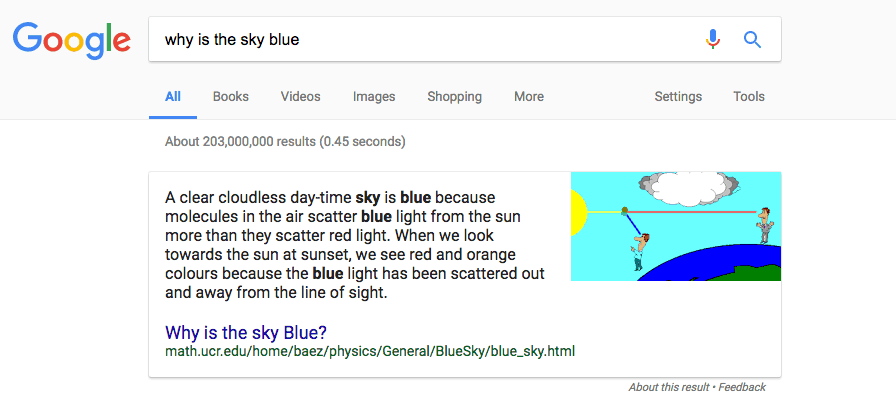
Featured snippets are becoming a growing area of focus within the competitive and constantly evolving world of search engine optimisation (SEO.)
And, according to HubSpot research, content that is selected to appear as a featured snippet can achieve double the click through rates of organic search results.
So what exactly are featured snippets? What makes a piece of content snippet-worthy? And what are the steps that marketers can take to increase their chances of securing one of these coveted positions?
In this blog post we explore the specific characteristics and functionality of featured snippets.
And we pull together the latest industry advice on how you can most effectively optimise your new (and existing) content to enhance the organic search visibility of your brand.
What are featured snippets?
Featured snippets (also often referred to as "position zero") are the selected search results that sit, inside a box, at the very top of the first page of organic results and immediately below the ads.
They are the answers that Google believes offer the most quick, accurate and succinct value for searchers.
And they're designed to provide immediate, relevant and helpful responses without the user even having to leave the search results.
Whilst various incarnations of featured snippet have been around since 2013 (when they first appeared in the form of "quick answers") it wasn't until 2016 that Google officially announced their arrival.
At that point there was also a clear distinction between what had commonly been referred to as "answer boxes" (or information derived directly from Google's own Knowledge Box) and "featured snippets" that were directly sourced from the top ten organic search results for any given query or question.
According to a getstat.com analysis, featured snippets most commonly appear in one of three formats:
By far the most common (accounting for more than 80% of all the snippets analysed) is the 'paragraph snippet.' As the name suggests, it's a text-based search result, typically no more than about 50 words in length and comprising 2-3 concise paragraphs.

The second most popular featured snippet format is the 'list' which accounts for just under 11% of search results - think how to's, recipes, step-by-step guides etc - with the third being the 'table' (7.2%) - which you're most likely to see in the form of calculations, conversions, comparisons etc.
Featured snippets demonstrate a distinct move away from the concept of generic keywords to a more user-intent focus - specifically on the use long-tail keywords that appear in the form of questions - What is..., How to..., Why do... etc.
What's also interesting to note is that voice search and featured snippets are closely linked, with voice search results frequently referencing the information contained in featured snippet boxes.
What makes content snippet-worthy?
While there's no exact formula for earning a featured snippet, there are steps that marketers can take to ensure you're creating online content that is snippet-worthy.
Be authoritative - What's resoundingly clear is that posts that already feature on the first page of Google are the most likely to appear as snippets. According to Ahrefs, 99.58% of featured snippets will already rank in the top ten SERPs in Google for that particular search query. However there is also evidence that Google pulls information from lower ranking SERPs, so it isn't necessarily the case that you have to be number one in your industry to gain the position zero spot.
Be helpful - If there is one central question that your website is seeking to answer for your customers - what would it be? How would your customers typically frame their questions around that subject? And how would go about answering it in the most succinct and useful way?
Be concise - An SEMrush analysis has shown that that most featured snippet answers are between forty and fifty words - so using short sentences, and keeping your answer concise is going to be key. As will be opting for content styles that are easily digestible such as step-by-step guides, lists, tables, bullet-points and charts.
Be savvy - There's plenty of research to suggest that search queries that use particular words have a much better chance of being featured. For example, among the most popular words in a list compiled by Ahrefs are: Recipe, Best, Vs, Make and Definition. Which of your existing higher-ranking pages feature keywords that could be added to create featured-snippet-friendly questions?
Analytics tools such as SEMrush can also help you to discover which featured snippets your competitors are currently earning. Armed with this information you can then look to optimise your own content for the same words and topics.
And finally too, in the spirit of inbound, be mindful of taking off your 'sales hat' and putting yourself in the shoes of your audience.
By customising, invigorating and enriching your online content you can provide your customers with perfectly-formed and genuinely helpful answers to their most burning questions.



